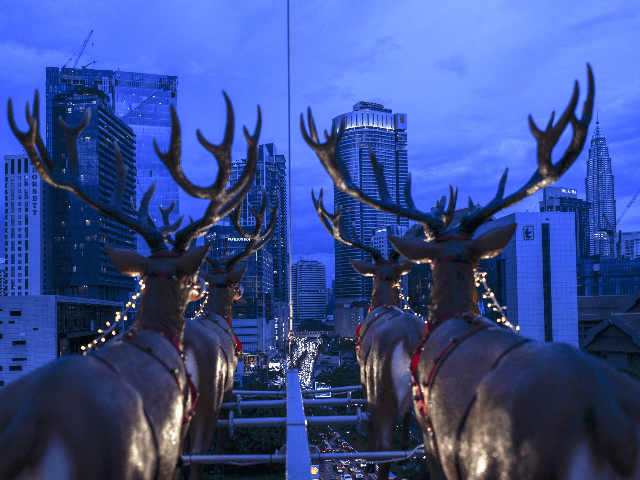As Santa Claus loads his sleigh led by flying reindeer, climate change proponents are spreading the story of the animals’ plight because of global warming.
The Guardian’s Weatherwatch feature reports that reindeer, or Caribou as they are known in many locales, are adaptable to extremely cold weather. And while they can’t fly, their biological design seems proof of God’s hand in their creation:
For a start, a reindeer’s feet have four toes with dewclaws that spread out to distribute its weight like snowshoes, and are equipped with sharp hooves for digging in snow.
A reindeer’s nose warms the air on its way to the lungs, cooling it again before it is exhaled. As well as retaining heat, this helps prevent water from being lost as vapour. This is why reindeer breath does not steam like human and horse breath.
Snowfields may be featureless to human eyes, but reindeer are sensitive to ultraviolet light, an evolutionary development that only occurred after the animals moved to Arctic regions. Snow reflects ultraviolet, so this ultravision allows reindeer to spot anything lying on it, in particular lichen, which they eat, and traces of urine showing where other reindeer have passed.
A few other fun facts about reindeer were reported on the Live Science website:
Reindeer are built for the cold. Their noses warm up air before it gets to their lungs and their entire bodies, including their hooves, are covered with fur. These creatures can’t fly, but they can run. According to the San Diego Zoo, they can run up to 50 mph.
But the Guardian says that a freeze-thaw weather pattern it blames on climate change is endangering the hardy caribou, by limiting access to lichen for grazing.
The Guardian also reported that the death of 200 reindeer earlier this year in the Arctic archipelago Svalbard was caused by climate change, according to the Norwegian Polar Institute, which cited starvation.
“Climate change is making it rain much more. The rain falls on the snow and forms a layer of ice on the tundra, making grazing conditions very poor for animals,” Ashild Onvik Pederson, who led an annual census of the reindeer population on the islands, said in the Guardian report.
The article, however, also said a large number of reindeer deaths were recorded in 2007-2008, but not in subsequent years leading up to latest census.
Moreover, the article also reports that a part of the problem is that the reindeer population has exploded despite weather patterns:
The increased mortality is also due in part to a significant increase in the number of reindeer in the Norwegian archipelago. That is partly thanks to climate crisis and the warmer summers, meaning more individuals compete in the same grazing areas.
Since the 1980s, the number of reindeer has doubled in Svalbard, and now stands at about 22,000, according to the Norwegian Polar Institute.
Live Science also reported that Santa’s reindeer may have been misnamed, because they are most likely all female.
“Male reindeer lose their antlers in November, but females keep theirs much longer,” Live Science reported. “This means that Santa Claus’ reindeer must have all been female, since they are depicted as having horns on December 24.”
Follow Penny Starr on Twitter

COMMENTS
Please let us know if you're having issues with commenting.